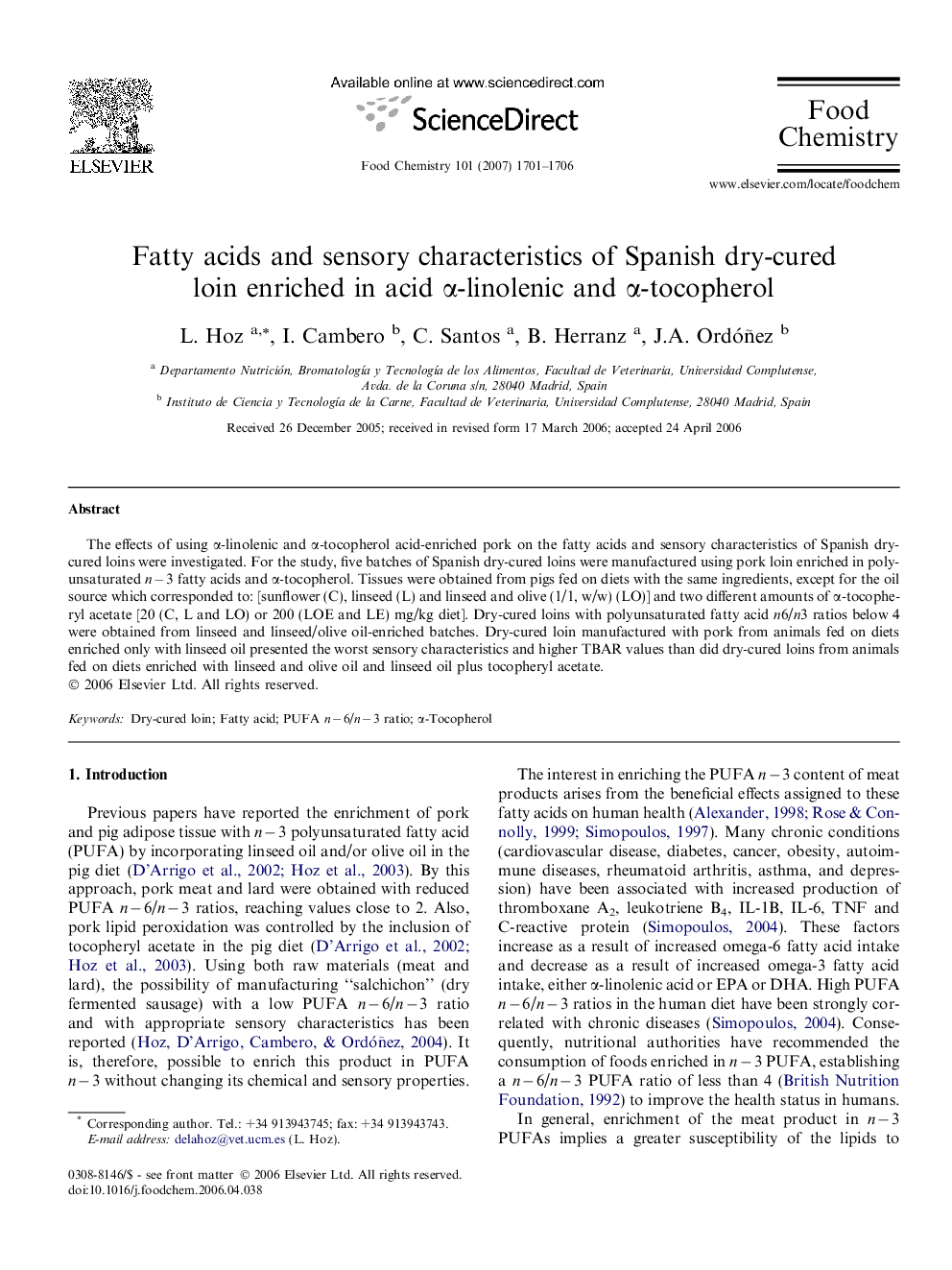| Article ID | Journal | Published Year | Pages | File Type |
|---|---|---|---|---|
| 1188249 | Food Chemistry | 2007 | 6 Pages |
The effects of using α-linolenic and α-tocopherol acid-enriched pork on the fatty acids and sensory characteristics of Spanish dry-cured loins were investigated. For the study, five batches of Spanish dry-cured loins were manufactured using pork loin enriched in polyunsaturated n − 3 fatty acids and α-tocopherol. Tissues were obtained from pigs fed on diets with the same ingredients, except for the oil source which corresponded to: [sunflower (C), linseed (L) and linseed and olive (1/1, w/w) (LO)] and two different amounts of α-tocopheryl acetate [20 (C, L and LO) or 200 (LOE and LE) mg/kg diet]. Dry-cured loins with polyunsaturated fatty acid n6/n3 ratios below 4 were obtained from linseed and linseed/olive oil-enriched batches. Dry-cured loin manufactured with pork from animals fed on diets enriched only with linseed oil presented the worst sensory characteristics and higher TBAR values than did dry-cured loins from animals fed on diets enriched with linseed and olive oil and linseed oil plus tocopheryl acetate.
